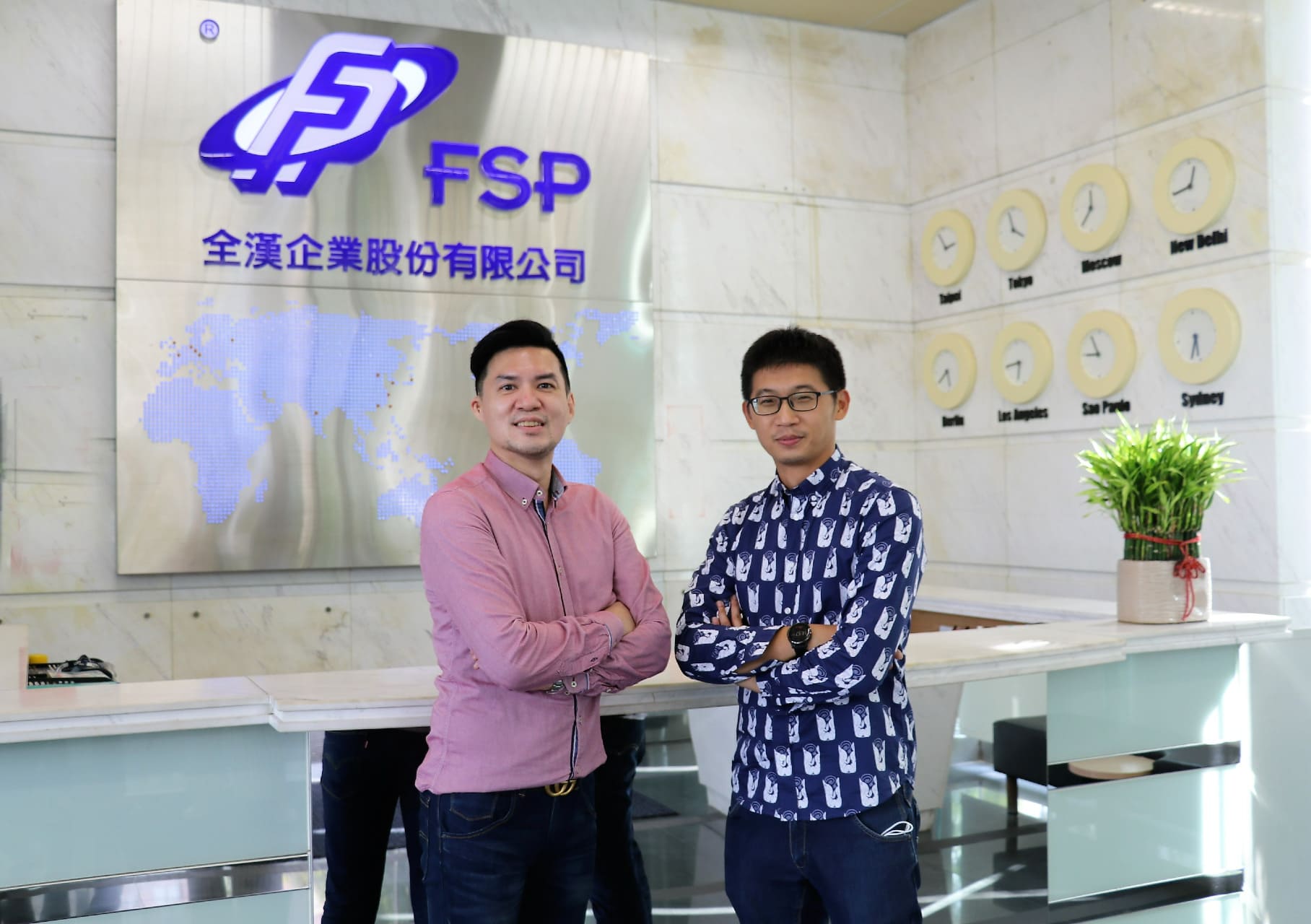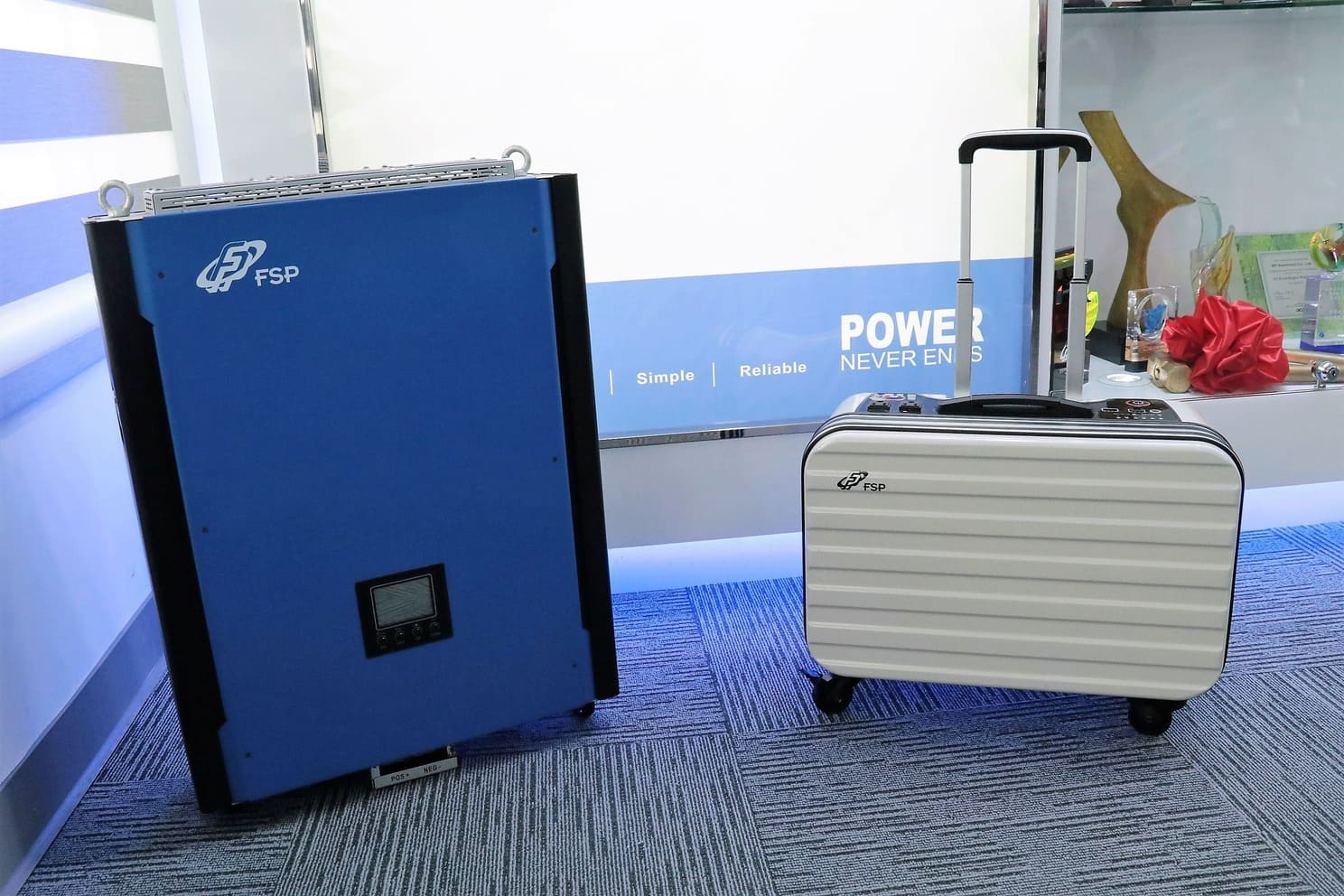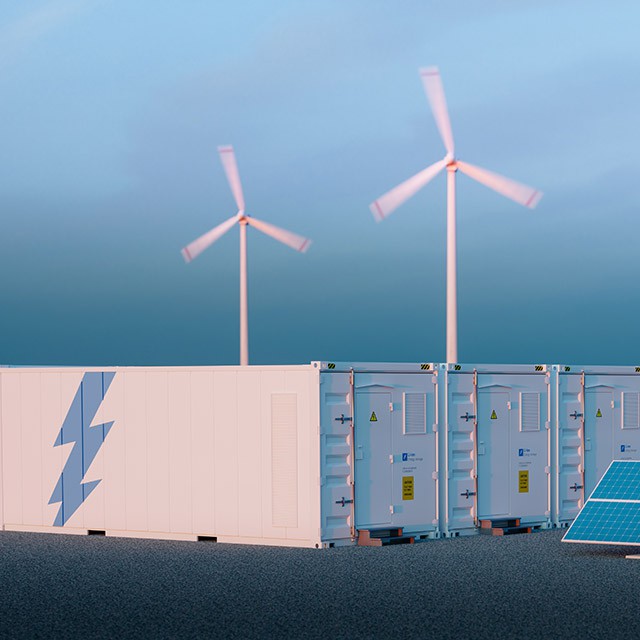FSP and Partners to Build Smart Micro-Grid Value Chain with Focus on Home Energy Storage Systems

▲ Left: Dr. Edward Chen, FSP Product Associate Manager. Right: Ben Cheng, Director of FSP.
(Image credits: Tech News)
FSP, which started out as a power supply manufacturer, has long invested in the development of new energy technologies. To support the global “Net Zero by 2050” plan and Taiwan's “Net Zero by 2050” transition program, FSP commenced work on developing smart microgrid systems and solutions. Integration with energy infrastructure such as renewable energy technologies and Distributed Energy Storage Systems (Distributed ESS) is also under way to realize the ultimate benefits of circular sustainability and energy independence.
As of today, 136 countries around the world have committed themselves to net zero emissions and joined the global low-carbon emissions initiative. Their goal is to limit "global warming to 1.5℃" as advocated by the UN International Panel on Climate Change (IPCC). These countries must progressively reduce their greenhouse gas (GHG) emissions by 50% (minimally 43%) before 2030 and reach net zero emissions by 2050 to effectively mitigate the pace of global warming. Taiwan has also announced its own "Taiwan's Pathway to Net-Zero Emissions in 2050" in March 2022. Under the plan, 900 billion NTD will be budgeted over 7 years to implement net zero transition projects based on the four areas of energy transition, industry transition, lifestyle transition, and social transition.
Peak Shaving Effect Allows Microgrid Systems Make the Most of Renewable Energy
The government has made increasing the proportion of renewable energy its official policy and is working to reach the target proportion of 20% by 2025. The growing number of renewable energy devices and their application will inevitably impact the operational stability and dispatching capability of legacy grids. Dr. Edward Chen, FSP Product Associate Manager, shared how one of the main challenges faced will be the development of renewable energy technologies that offer improved energy efficiency and stable energy supply. FSP's answer to this challenge leveraged smart microgrid systems and distributed ESS technology to meet the target of smart power dispatching and enhanced grid resilience.
Chen emphasized that renewable energy systems as well as energy storage systems and peripherals such as power supplies, chargers, and batteries, must be fully integrated to construct a smart microgrid system that delivers circular sustainability and energy independence. The home photovoltaic (PV) distributed microgrid system developed by FSP integrates the PV system, high conversion efficiency charger, inverter, and automatic switching.
FSP defines a microgrid as a series of generating equipment and loads all connected to each other within a specific region with clear power boundaries. The main benefit of microgrids is their ability to provide a reliable avenue for renewable energy to be integrated into the existing grid. The system's ability to regulate peak power consumption and implement peak-shaving has obvious benefits for the mitigation and adjustment of grid loads and peak power consumption.
Smart grids are different from legacy power grids in that we can treat them as micro-power power plants/stations for homes and the local community. Smart grids can operate autonomously or as part of a smart grid. Smart grids can even provide emergency backup power in the wake of natural disasters. Chen added that a smart microgrid must include renewable energy in its front-end generation network. There must also be ESS on the power transmission/distribution side on the local side as well. The next step is to have a local side that is composed of a series of self-generating and self-consuming microgrid devices (batteries, PV panels, inverters, sensors, battery modules, and electric vehicle charging pillars etc.)
An innovation business model based on the building of V2G smart charging/battery swapping stations through top-down energy cooperation
Microgrids have extensive applications in settings such as residential, commercial, schools and hospitals. To ensure the effective verification, dispatching of power generated, and storage on the user side, FSP recommends following the Japanese approach by using IoT communications technology to enhance the dispatching of renewable energy. As long as the stability of the power supply can be assured, industry partners can be recruited to provide users with a multi-purpose energy management system that handles everything from homes, businesses, charging pillar management and smart streetlights. Total management of the user-side in real-time can then be achieved.
The energy management system is therefore of obvious importance to the smart microgrid. As for using the energy management system to demonstrate effective adjustment of renewable energy, FSP believes that Taiwan should move beyond "load following" to a "bottom-up energy cooperation" approach. Domain or home smart grids should be extended and combined into city-level "Virtual Power Plants" (VPP). A city's energy supply and demand can then be balanced through appropriate energy management and regional energy supply stabilized. On the home side, once Advanced Metering Infrastructure (AMI), Electric Vehicle (EV) charging pillars, smart appliances and energy storage devices become widespread, the Home Energy Management System (HEMS) can be used to provide the general public with a convenient way to enjoy the fruits of energy independence and Automated Demand Response (ADR).

▲ FSP offers PV inverter and energy storage products of high-quality and stability: HySpirit Three Phase 10kW and EMERGY 1000 (left to right).
(Image credits: Tech News)
At the same time, one of smart microgrid's most promising applications is the ability for EVs take advantage of PV, energy storage and energy management systems through smart grids. Optimized dispatching ensures best electricity costs and reliability for charging services. FSP set up EV charging pilot trials to introduce time-of-use/power management and promote demand response/auxiliary services. These are developed into a new innovative business model for "Vehicle-to-Grid" (V2G) smart charging/battery swapping stations that demonstrate the massive benefits of off-peak charging and peak feed-in for EVs. Now that leading car makers such as VW, BMW and Hyundai are all beginning to support the V2G and "Vehicle to Home" (V2H) functionality, FSP will integrate the home ESS and EV to create a convenient two-way power charging/discharging platform in the future.
Focusing on mobile, intelligent, customizable and modular microgrid energy storage systems
Current ESS can be roughly divided into grid-grade equipment that supports Front-of-the-Meter (FTM) Automatic Frequency Control (AFC) and microgrid-grade All-in-One home ESS products suitable for Behind-the-Meter (BTM) operations. Common grid energy storage devices today include batteries, supercapacitors, flywheels, superconducting magnetic energy storage, hydrogen energy storage, compressed air energy storage, hydro power from pumped water in storage, and superfluid batteries.
While FTM ESS in the conventional smart grid market generally have capacities in the MW range, FSP is currently focusing on BTM ESS suitable for smart microgrids such as AiO and mobile energy storage devices below 10 kW which are suitable for smart homes, those rated below 60 kW targeted at smart commercial properties, and those rated below 100 kW targeted at smart factories. Commercial and factory ESS are usually designed for emergency backup, auxiliary power, and energy efficiency. Home ESS are generally designed for backup power but can also make money by selling electricity.
It should be noted that all FSP energy storage products are mobile, intelligent, customizable and modular. FSP can also provide micro-customized designs for components such as inverters and batteries to satisfy customer requirements in demand-response, instant backup, and uninterrupted power supply.
According to Edward Chen, FSP’s strategy is to enter the energy storage market through the hardware side while working with partners to offer very competitive integrated products. They also advocate the integration of energy storage, renewable energy and electricity trading to improve grid stability and achieve regional power-sharing. FSP microgrid systems and solutions can be connected to the national power grid through the ESS. Private and public charging sites can then be combined to deliver a range of benefits such as self-consumption, feed-in tariffs and net zero energy.
Successful projects and high-efficiency green products help customers realize ESG transformation
FSP has delivered several successful projects around the world in different domains over the years. In 2020 for example, 60 kW and 10 kW energy storage systems were set up at Peenemünde Airfield and Peenemünde Harbor respectively in northern Germany where a local grid connection was not available. The projects were successful in providing the site and the museum – converted from a WW2 submarine - with plentiful and stable supply of electricity and lighting.
In 2016, FSP provided 4 energy storage products, battery modules, and a smart building energy management system (BEMS) for the first pilot trial of a smart grid energy storage system for public housing in Taiwan at Xinlong Public Housing in Taipei's Wenshan District. Demand-response was successfully implemented during peak usage to reduce energy consumption and carbon emissions. In 2016, the National Chung-Shan Institute of Science & Technology (CSIST) set up Taiwan's first "carbon neutral community" at Dongkeng in Kinmen. FSP participated in the preliminary research for the demonstration energy storage system. We contributed to the government effort to build a distributed microgrid project which included the 46 kW inverter, 145 kWh battery module, and supporting energy management system.
FSP has many years of experience in ESS development. To support the government's net zero emission targets and net zero transformation project, FSP has been a strong supporter of high-efficiency green energy products and technologies which support safe, clean and renewable energy to help families and businesses realize ESG transformation. "The FSP R&D team will devote even more R&D capacity to creating unique value and implement smart home microgrid systems and solutions," said Ben Cheng, the FSP Director. "Home energy storage devices will be crucial to the popularization and development of smart microgrids, and FSP hopes to contribute to and create value in this process."
Know more about product application: Smart Microgrids Microsite
For more FSP product information, please visit:



